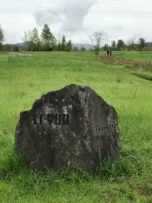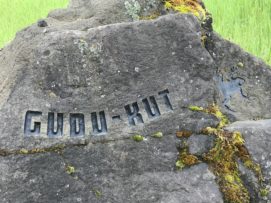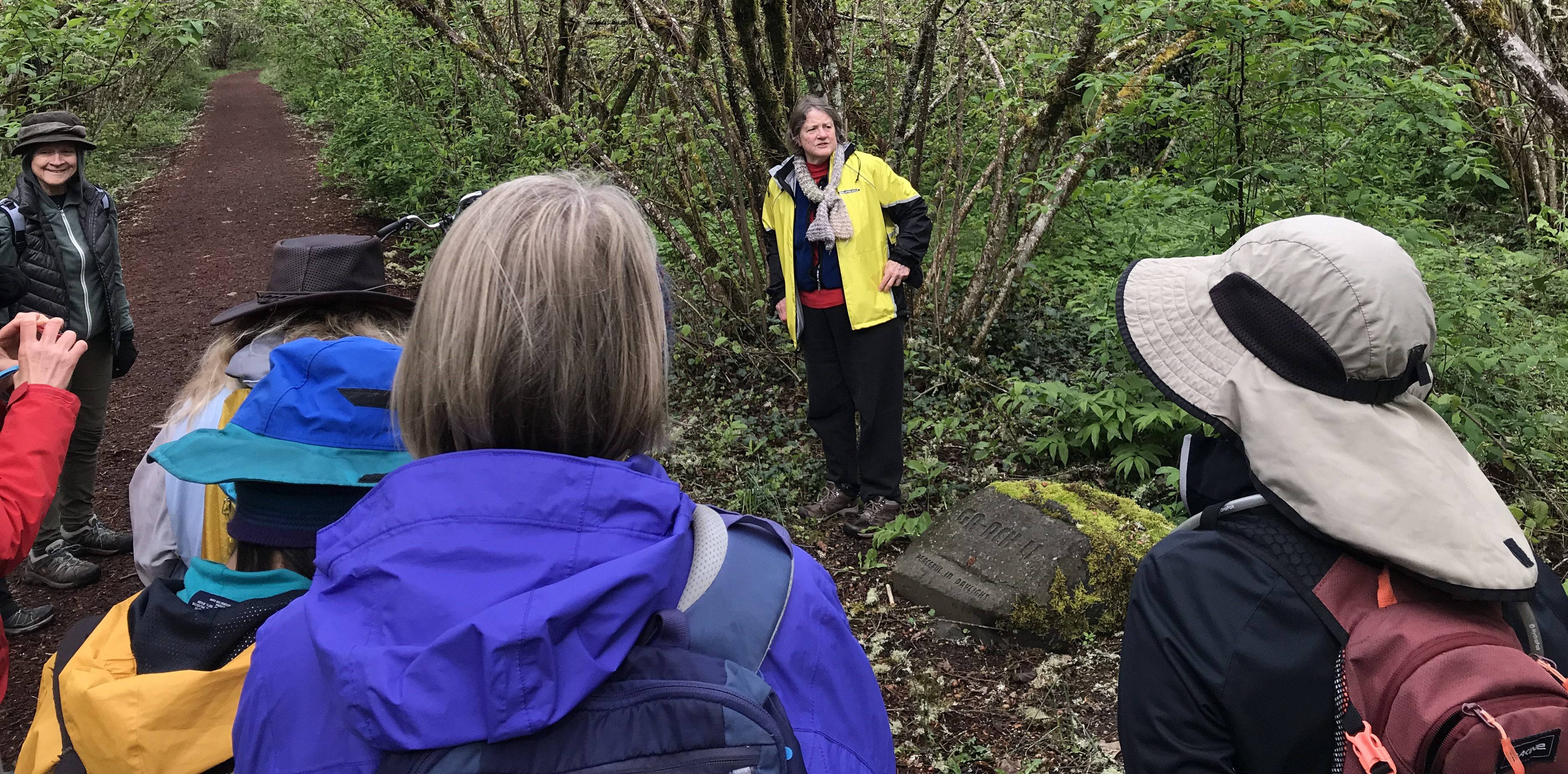
Trip Report -Volunteer Leader: Mark Hougardy; Group: Eugene-based Hiking Club; Dates: April 2019; Participants: 16; Type: Urban & Trail Walking
Imagine attending a grand celebration…
Every year, 100 people gather to laugh, tell stories, eat good food, and celebrate. Near the conclusion of the festival, everyone erupts into a joyous song, this music is extra special because for it to be harmonious each person is responsible for contributing just one note at the right time. The song rises and flows with many voices as old and young share. The following year there is another celebration but now a people few are missing. The next year, there are others who don’t attend and the melody starts to fray. For decades this unraveling of the song continues as fewer people are around to sing. Afer one hundred years only two people remain. They sing with passion, but how do they celebrate the larger song with so many notes missing? …How would you?
In the early 1800s, the Kalapuya people numbered around 15,000 and were the largest Native American group in what is now known as the Willamette Valley of western Oregon. Diseases introduced to the area decimated the population and by 1850 about 1,000 people remained. In 1900, the Kalapuya numbered about 300 (2% of the original population) and by the 1950s the last generation of speakers had passed. A 1977 University of Oregon anthropological paper declared, “the Kalapuya population is now presumed extinct.”
This was the setting for Esther Stutzman, a woman of Kalapuya heritage who wanted to revive the language. Over the years she made incremental steps to build awareness about the Kalapuya and awaken the language, but even into the early 1990’s, she was told by academics to not even bother as the language was dead. One reason for this difficulty was the geographic connection to Kalapuya place names no longer existed; pioneers had given all the landmarks names. Esther eventually partnered with the Citizen Planning Committee of East Alton Baker Park. Together, they convinced Willamalane Parks and Recreation and the City of Eugene to re-associate place names with Kalapuya words and phrases. The 237-acre park was re-named the Whilamut Natural Area of Alton Baker Park, and a year later, they placed cultural art installations known as the Kalapuya Talking Stones.
The Talking Stones are etched boulders that carry a Kalapuya word from one of the several dialects that describe the location where the stones reside. Today, fifteen stones quietly speak with those who will listen from along riverside trails in the Whilamut Natural Area in Eugene and the Eastgate Woodlands of Springfield, Oregon.

The stones are etched with a simple font that approximates being written by a human finger as though an elder has just shared an idea by drawing a concept in the earth.
Placing the stones required years of work, public education, and patience from Esther and often-unsung heroes on the Citizen Planning Committee (CPC), including Charlotte Behm, Vicky Mello, David Sonnichsen, and others. The group has spent more than twenty years (as volunteers) diligently working to place and maintain the sacred Talking Stones and to educate the public about their important role in our community. The Talking Stones is a watershed project on blending native place names within metropolitan areas for the education about the people who once lived -and

To better understand the Talking Stones’ stories Charlotte Behm joined us on our 2.5-hour walk. She shared her experiences and history about the stones and some of the challenges that remain. We were happy to listen and better understand the geographic connection to Kalapuya place names. Thank you, Esther and Charlotte, and the many others for helping to share a larger story with your voices.
An additional thank you to Charlotte Behm for her help with this article.
Additional Resources:
> Kalapuya Talking Stones Brochure & Map (PDF)
> Video: Hunting for History Part 5: The Kalapuya Talking Stones
> Article: “Future of the Kalapuya Story“
> Article: “Ancient Oregon Languages Being Nudged Awake“
> The “presumed extinct” reference is from publication
